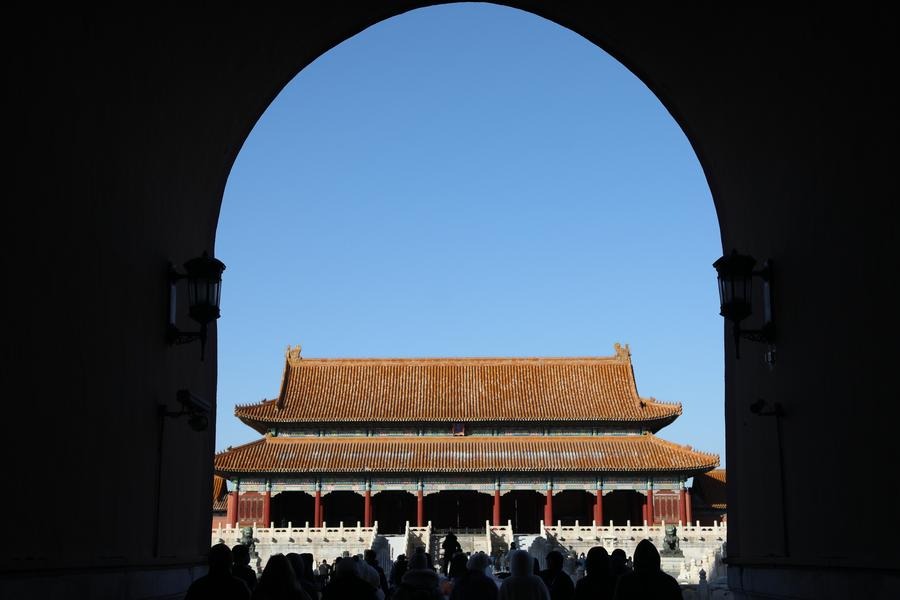Chinese firms rise between hard and soft power


Chinese companies' remarkable ascent on the global stage tells the tale of impressive growth and transformation. Today, Alibaba, Huawei, Tencent and TikTok are household names across the world, and China's corporate giants have become major players in the global economy, redefining the dynamics of international trade, investment and innovation.
On the 1995 Fortune Magazine's Global 500 list, the United States was the undisputed leader, with 151 companies followed by Japan with 149. Three decades later, China has emerged as the primary contender to the US, with 128 companies on the 2024 list compared with the US' 139. China's big companies represent a diverse array of industries, including construction, oil, insurance, banking and technology.
Notably, several Chinese companies — the State Grid Corporation of China, Sinopec Group, China National Petroleum Corporation, China State Construction Engineering Corporation, Industrial and Commercial Bank of China, and the China Construction Bank — now rank among the top 30 on the Fortune Global 500 list.
According to the Emerging Market Institute of Cornell University, if we consider companies with revenues exceeding $1 billion, China has more "billionaire companies" than the US. Among the about 10,500 billionaire companies in the world, an estimated 25 percent are Chinese and 19 percent American.
Chinese companies are not only large; they also have operations and investments in all continents. Among the top 20 most popular destinations for the 330 largest Chinese companies in 2022, based on the number of companies with subsidiaries in a country, one finds not only Asian countries but also the US and several European economies, including Germany, the United Kingdom, the Netherlands, Italy and France, as well as Brazil and Canada.
About 70 percent of big Chinese companies have subsidiaries in the US, and more than 60 percent in Germany, about 40 percent in the UK and the Netherlands, and at least 30 percent in Canada, Brazil and Italy. Chinese enterprises are also present in Africa, with subsidiaries or affiliates in most African countries.
Furthermore, since the late 2010s, greater investment scrutiny and limitations in the European Union and the US have made it harder for Chinese multinational companies to expand in those markets. In 2023, for example, greenfield investments by Chinese enterprises shifted away from advanced economies toward Asian and other emerging markets.
Xinyi Glass, for instance, announced it would invest $11.5 billion in Indonesia in minerals, and Geely $10 billion in a car factory in Malaysia. United Energy announced a $8 billion chemicals project and two additional mega greenfield projects in renewables worth $13 billion in Egypt. Also, BYD and Great Wall Motor have invested in Thailand, Mexico and Turkiye; Gotion High-Tech and BTR in Morocco; Universal Scientific Industrial in Vietnam; and TCL in Saudi Arabia. A similar pattern is seen in China's cross-border mergers and acquisitions.
Such a shift in the geography and mode of entry of Chinese foreign direct investment reflects the strategic response by Chinese firms to the changing global economic and political landscape. Less focused on acquiring assets such as technology and natural resources, Chinese investment is blossoming in manufacturing in emerging economies, helping Chinese enterprises to gain a footing in those economies and intensifying competition for the traditional players.
Beyond physical presence, if we consider brand recognition, the US has dominated Brand Finance's list of the 500 most valued global brands since its inception, making up about 40 percent of the entries. There is a significant gap between Chinese enterprises' global size and presence and their global brand recognition. But Chinese enterprises, too, have advanced in recent years. In 2010, for instance, the share of Chinese enterprise in the ranking of the 500 most valued brands was barely 4 percent. Fast forward to 2025, to a drastically changed landscape: Chinese brands make up 14 percent of the Brand Finance's top 500 Global Brands.
Technology and innovation have enabled Chinese brands to gain global recognition across various industries, including e-commerce, media and entertainment, telecommunications, and electric vehicles. This success has changed the global perception of Chinese products, moving beyond the traditional "Made in China" label.
Brands such as ByteDance (parent company of TikTok) in entertainment, Tencent and Century Games in multimedia and gaming, Huawei, Oppo and Xiaomi in smartphones, Lenovo in computers, Alibaba and Temu in e-commerce, Shein in online fast fashion, Haier, Hisense, Midea and TCL in consumer electronics, DJI in drone manufacturing, and Geely and BYD in EVs are well-known around the world today.
Twenty years ago, consumers outside of China probably could not name more than a couple of Chinese brands. The case of the State-owned enterprise State Grid is particularly noteworthy. It is one of the top 10 most valued global brands, alongside another Chinese brand, TikTok, on the Brand Finance top 500 ranking list.
To address today's challenges, Chinese enterprises are changing their overseas expansion strategy and capitalizing on their vast domestic market. The reinforcement of China's antimonopoly legislation — through the establishment of the State Administration for Market Regulation in 2018 and the 2022 revision of the Anti-Monopoly Law — could bolster this advantage by making China's domestic market more unified. Especially important in that respect are the measures in the revised law aimed at prohibiting administrative monopolies and lowering local protectionism.
Chinese companies continue to grow despite an increasingly fragmented global economy by shifting their focus toward emerging markets, especially in Asia. There is room for Chinese brands to move further ahead and, hence, for Chinese corporations to boost their soft power.
Lourdes Casanova is a senior lecturer and director of the Emerging Markets Institute at Cornell SC Johnson College of Business, Cornell University; and Anne Miroux is a faculty fellow at the same institute.
The views don't necessarily reflect those of China Daily.
If you have a specific expertise, or would like to share your thought about our stories, then send us your writings at opinion@chinadaily.com.cn, and comment@chinadaily.com.cn.


































